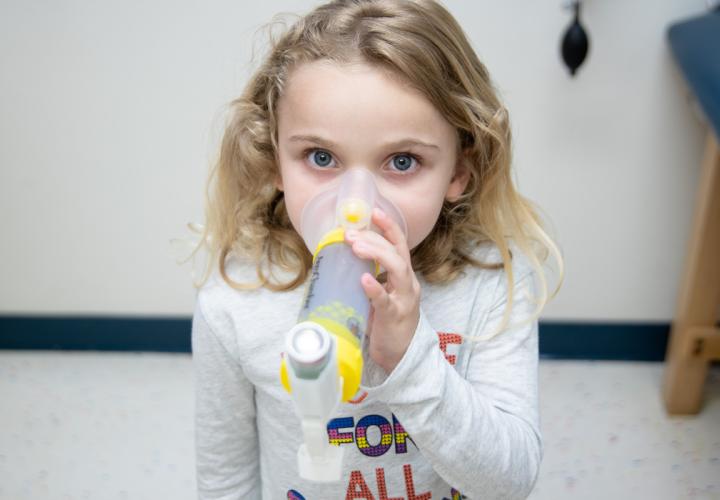By: Jessica Hollenbach, PhD
Asthma affects more than 8% of youth in the United States making it one of the most prevalent chronic illnesses affecting young people, and it disproportionately affects children living in underserved communities. The complexity of current guidelines for treating asthma is often overwhelming for primary care pediatricians. However, standardized asthma management programs, such as the Easy Breathing program offered by Connecticut Children’s, can enhance quality of care and improve outcomes of children receiving such care.
Scoping Review Discusses Asthma Treatment Challenges
A new review of existing literature and programs related to pediatric asthma published in the Annals of Allergy, Asthma and Immunology notes that primary care providers continue to underdiagnose asthma and continue to underutilize anti-inflammatory treatments to manage the chronic illness. This is due in part to how complex current guidelines are for clinicians to implement. In addition, the number of written asthma treatment plans and preventative care visits remain low. Additional barriers to implementing current asthma guidelines include a lack of time, a lack of buy-in among staff, and a lack of a mandate to implement such guidelines.
Asthma is a condition that is most commonly managed in a primary care setting, which makes it critical for primary care clinicians to be able to adopt and implement current best practices in asthma care. The article notes the benefits of standardized asthma management programs in a primary care setting, as the implementation of such programs increase the adoption of asthma guidelines and, as a result, enhance outcomes for patients affected by asthma by reducing Emergency Department visits and increasing symptom-free days.
Read the article: Implementation of standardized asthma management program in outpatient settings
How Standardized Asthma Management Programs Can Help
The study highlights the Easy Breathing program offered through Connecticut Children’s Asthma Center, which helps to simplify and streamline current asthma treatment guidelines to make them easier for busy primary care providers to implement. As the review notes, Easy Breathing is based on the 2007 National Asthma Education and Prevention Program Expert Panel Report and was recently updated to include changes recommended in the 2020 Focused Update.
In Connecticut, primary care practices utilizing Easy Breathing were found to have a 96% adherence rate for implementing asthma severity-specific therapy and that 94% are utilizing written asthma treatment plans. Easy Breathing has been successful in reducing hospitalizations for children insured by Medicaid by 35% and has reduced Emergency Department visits for such children by 30%.
Easy Breathing is available to pediatric practices throughout the country.
